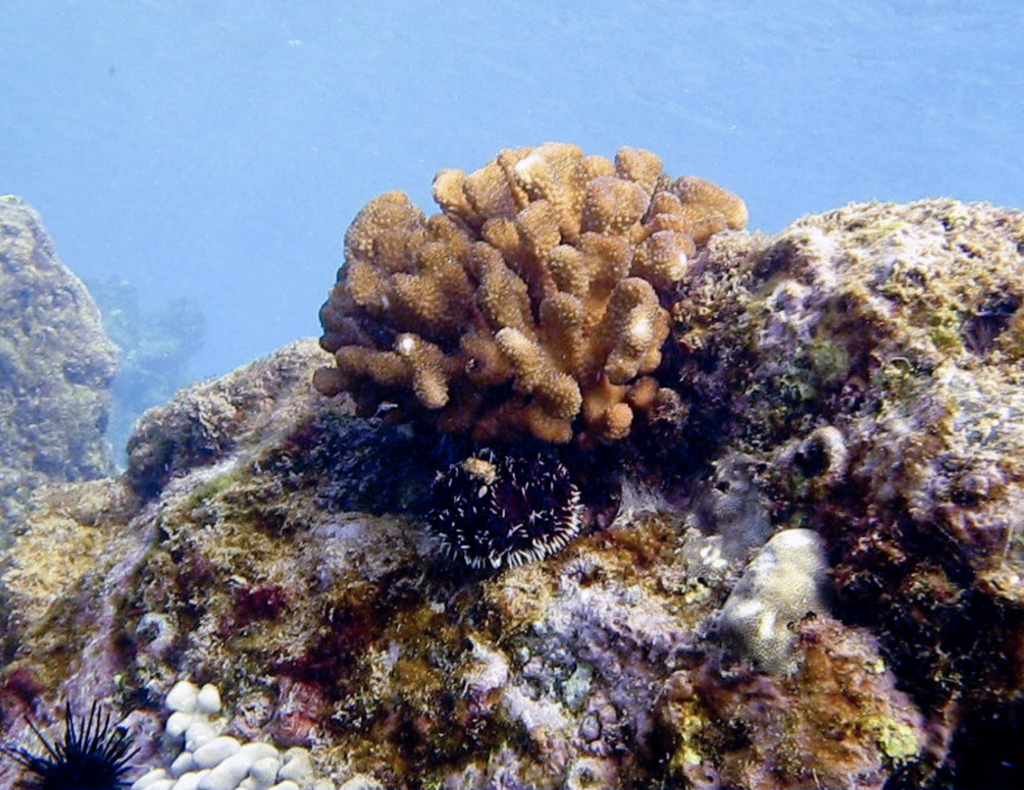$2M in coral restoration grants awarded to US Pacific Islands

The National Marine Sanctuary Foundation awarded seven grants totaling more than $2 million to support coral restoration in the four US Pacific Island jurisdictions of Hawaiʻi, American Sāmoa, Commonwealth of the Northern Mariana Islands, and Guam. The grants are funded by the National Oceanic and Atmospheric Administration.
The grants will support projects that directly contribute to coral restoration progression in the US Pacific Islands by providing the means for capacity building and/or restoration implementation.

Hawaiʻi Department of Land and Natural Resources
- In support of the Makai Restoration Action Plans, the project will (1) engage fishers in drafting the Goal 3: Fisheries Habitat Action Plan, (2) coordinate site-specific planning in Waikīkī for Goal 1: Bleaching, and (3) support the Special Activity Permitting process and environmental review for coral reef restoration projects statewide.
University of Hawaiʻi at Hilo (Hawai’i Cooperative Fishery Research Unit); University of Hawaiʻi at Mānoa (Hawai’i Institute of Marine Biology); and The Nature Conservancy of Hawaiʻi
- Leverage multi-sector collaborations to provide turbidity and sedimentation thresholds of reef-building coral species at Olowalu Reef on Maui, Hawai‘i. The project will provide information vital to mitigate drivers of reef degradation and to plan the location and timing of coral planting at this priority restoration and beyond. It will also improve the selection of coral taxa and morphologies that are resilient to both sediment and climate stressors.

The four US Pacific Island jurisdictions started a coral restoration planning process in 2020 that led to the development of a draft action plan for each jurisdiction for one priority restoration goal. Now, additional investment and capacity is needed to meet the US Pacific Islands coral restoration goals and implement the draft restoration action plans.
“NOAA is excited to support these grants for work that is critical to capacity building and implementation of restoration plans that were developed by each of the four US Pacific coral reef jurisdictions. There is a growing need for coral restoration in the Pacific and these projects help to address that need,” said Carrie Selberg Robinson, director of the NOAA Fisheries Office of Habitat Conservation.
Coral reef ecosystems are important to the livelihoods of people in the US Pacific Islands and provide substantial economic value through coastal fisheries and tourism. They provide immense cultural value, including to Native Hawaiians and other indigenous groups in the Pacific, as well as coastal protection and recreational uses. However, reefs are declining due to stressors including climate change impacts such as bleaching and ocean acidification, land-based sources of pollution, overfishing, and intensive human uses in some areas.
“Innovative conservation incorporates Indigenous and local knowledge and wisdom into the protection and restoration of habitat and recovery of species and must be supported,” said Joel R. Johnson, National Marine Sanctuary Foundation president and CEO. “Restoring marine ecosystems, building local capacity in diverse communities, protecting biodiversity through sanctuary designation, like the Pacific Remote Islands, all contribute to the climate resiliency of our ocean and Great Lakes.”
The projects funded will help transition the US Pacific Island jurisdictions’ local prioritized reef sites identified in the draft restoration action plans from restoration planning into implementation, which will ultimately restore their ecological function and the benefits they provide to local communities.
The projects will take place through the Summer of 2025.









